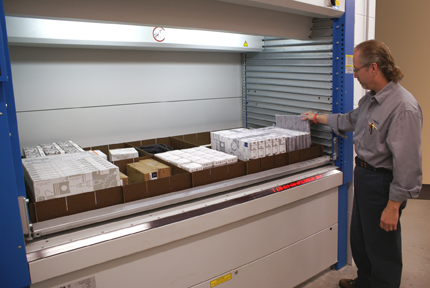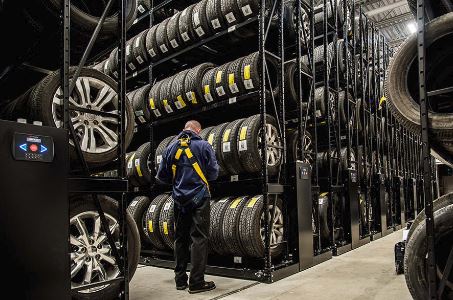As we approach the 4th quarter here in New England, auto parts distributors look to enter their busiest season of the year. The combination of winter weather, holiday travel and shorter days unfortunately can result in more automobile accidents. Cars will need to be repaired, thus, more auto parts demand. As with so many industries today, peak seasons lead to a couple of major material handling challenges:
Product Size


A product like a vertical or horizontal carousel or shuttle is a great way to store and maintain small auto parts. These 

The medium-sized items will be located in a very narrow aisle (VNA) section that uses order pickers or swing reach trucks to pick one large order or multiple orders at once. The larger items will be put into the full pallet storage section of a warehouse where the aisles are larger and reach trucks or counterbalanced forklifts are used for put away and retrieval.
Storage Space
As manufacturers continue to make cars more sophisticated and reliable, one would think this would be beneficial for an auto parts distributor. What you may overlook is that not everyone will have a new car. The average age of a car in the US is currently over 10 years, as this generation of cars has a longer useful life. That means auto parts distributors must maintain inventory for many years of makes/models. This can lead to some product that may be for cars 15-20 years old, but because of the demand, there needs to be storage on-site.
An excellent solution to this storage challenge for slower moving parts is to create a mobile 

Auto parts dealers would be well served to partner with a material handling company that understands their challenges and constraints and can assist them with maximizing storage and operational efficiencies. How you are currently storing your auto parts?



Leave a Reply
You must be logged in to post a comment.